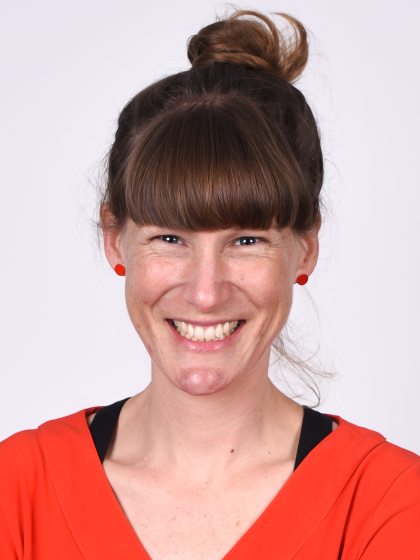S.K. (Sonja) Billerbeck, Prof

Find out more about the Billerbeck Lab.
We are looking for Master's students that would like to complete a research project (years 2022/2023) in the areas of Synthetic Biology, Protein Engineering, and Antimicrobials. Email Sonja in case of interest!
Research: Nature provides a plethora of genetically encoded functions, such as receptors that can sense the environment or detect pathogens, enzymes that can convert metabolites into valuable chemicals or degrade pollutants, or natural products that can kill pathogenic microbes. These functions are distributed across the genomes of different organisms, but as the genetic code is conserved and can be read and translated by any organism, they can be harvested, combined in new ways and engineered, to build organisms with new-to-nature functions
The lab's current research uses a combination of synthetic biology, genome engineering, protein engineering and environmental microbiology to access, understand and engineer the functional diversity of nature’s yeast-based mycobiome. The lab is interested in understanding and engineering both, industrially relevant yeasts such as wild isolates of Saccharomyces cerevisiae as well as yeast-based human fungal pathogens such as Candida glabrata, Candida albicans and Candida auris.
Current focus areas are
- Accessing and engineering the secreted yeast killer toxicome as a source for innovative antifungals.
- Development of a Synthetic Biology approach to understand fungal pathogen biology.
- New genome engineering and Synthetic Biology tools for wild yeast and fungal pathogens, as well as for the assembly of synthetic ecosystems.
Further reading:
1. Billerbeck*, J. Brisbois*, N. Agmon*, J. Temple, M. Jimenez, M. Shen, J.D. Boeke, V.W. Cornish. “A scalable peptide/GPCR language for engineering multicellular communication.” Nature Communications (2018) 9:5057.
2. Oesterle, T.M. Roberts, L. Widmer, H. Mustafa, S. Panke, S. Billerbeck “Sequence-based prediction of permissive stretches for internal protein tagging and knockdown.“ BMC Biology (2017) 15:100.
3. Ostrov*, M. Jimenez*, S. Billerbeck*, J. Brisbois, J. Matragrano, A. Agar, V.W. Cornish. “A modular yeast biosensor for low-cost point-of-care pathogen detection.” Science Advances (2017) 3(6), e1603221.
| Last modified: | 24 July 2022 11.31 a.m. |
